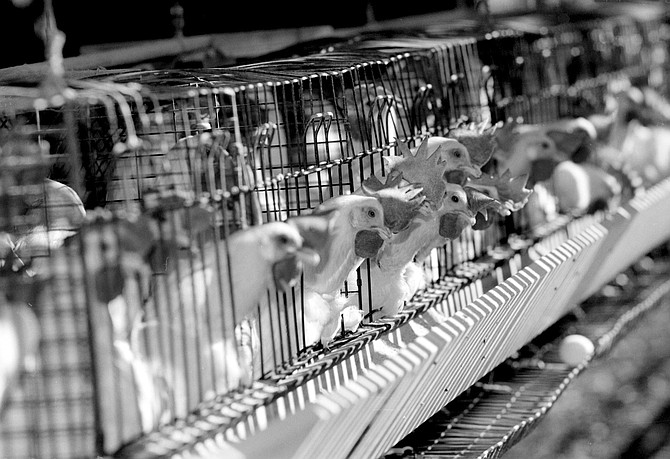
"People say, 'Your chickens aren't healthy, you keep them in pens.' But when they're in the cages, I can give them a balanced diet."
- As the hysteria over the West Nile virus moves westward, California appears to be the inevitable destination of the mosquitoes that carry the deadly virus. David Faulkner, 51, is a forensic entomologist and a research associate of the Museum of Natural History in Balboa Park: "We have an artificial environment, because we supply our water from outside, and that will restrict the activity of the mosquitoes, which would obviously restrict the spread of the virus."
- By Robert Kumpel, Sept. 5, 2002
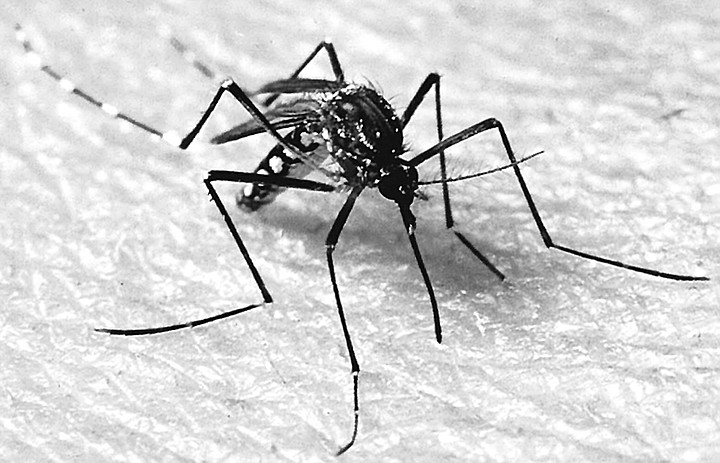
Mosquito, Aedes aegypti. "I can go out in the back yard at dusk, and two or three mosquitoes will come after me, mostly Aedes, which is a good biter, and it's because we have water around here."
- It's hot and it's dry in Bear Valley, in the foothills northeast of Escondido. The grass in the fields crackles underfoot. The live oaks on the hillsides and in the barrancas appear half dead, a mix of brown and green foliage hanging from their boughs. But the ostriches on David Stepp's ostrich farm don't seem to mind the midday August sun beating down on them.
- By Ernie Grimm, Sept. 19, 2002

"We never fight with them. If they are aggressive, then we stay away."
- You can't use your nose to find the ranch because the sharp ammonia odor you may associate with chicken farms is absent. Harold Hilliker, second-generation owner of Hilliker's Egg Ranch, explains why. "It's called the coning and drying method. The manure piles up and it cones. The more surface area it has, the faster it dries."
- By Ernie Grimm, Dec. 13, 2001
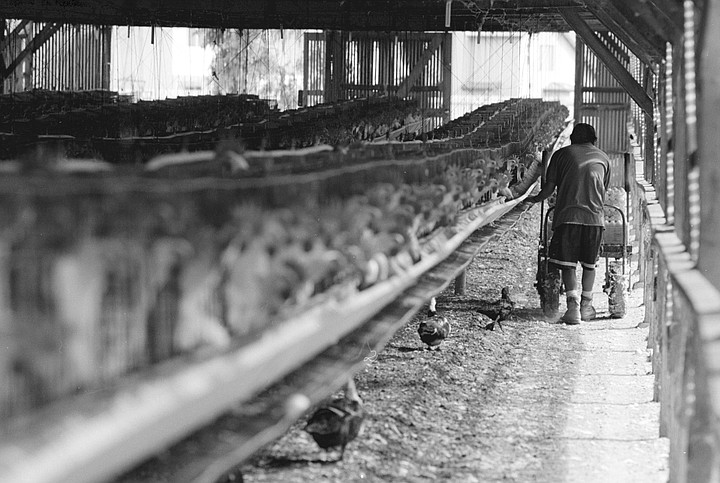
The three-foot elevation of the cages allows the chicken manure to accumulate in conic piles and dry underneath the cages.
- "I've got Northern Spy that I'm almost sold out of. They're known better on the East Coast; wonderful, tart cooking apple. Some people love to eat them. I've got a few Arkansas black, Mammoth Black Twig, a few Pippins yet. Pippins used to be a big apple, but they're going obsolete now. They used to be the green apple you got in the store. Now Granny Smith is taking over."
- By Ernie Grimm, Nov. 8, 2001
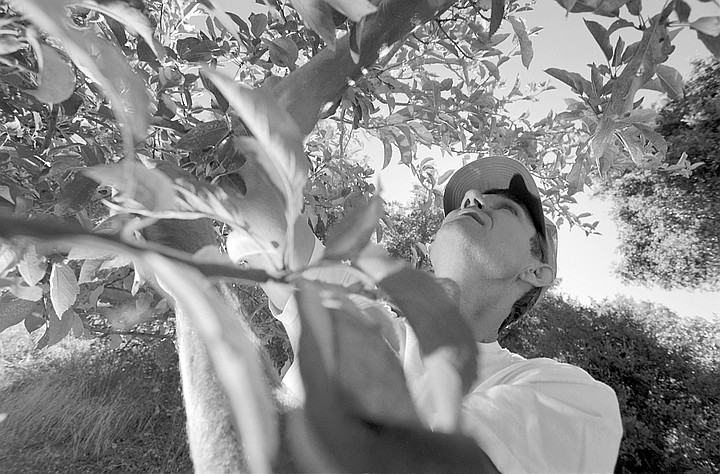
Roger Sonnenberg: "Ninety cents a pound is the lowest price I get for apples."
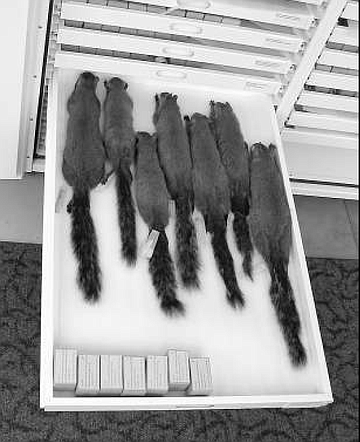
Squirrel specimens at Museum of Natural History. Shelly Meyers at Kahoots Feed Store in Ramona says that they can't keep enough squirrel poison in stock.
- Scott Treemore, 37, is a research assistant at the Natural History Museum in Balboa Park. He has been studying squirrels for the last four years. "You'll find arboreal [tree] squirrels mostly in the coniferous forests in the backcountry and some of the local inland areas, particularly at higher elevations."
- By Robert Kumpel, Oct. 31, 2002
- San Diegans who refer panhandlers to St. Vincent de Paul Village or the Rescue Mission may not know about San Diego's local canyons. Jon Rebman, the curator of botany at San Diego's Natural History Museum, says that much of the plant life that grows in San Diego's canyons and back yards is perfectly edible…. Most of the cacti have edible fruits.
- By Robert Kumpel, Dec. 5, 2002
 Facebook
Facebook
 X
X
 Instagram
Instagram
 TikTok
TikTok
 Youtube
Youtube












